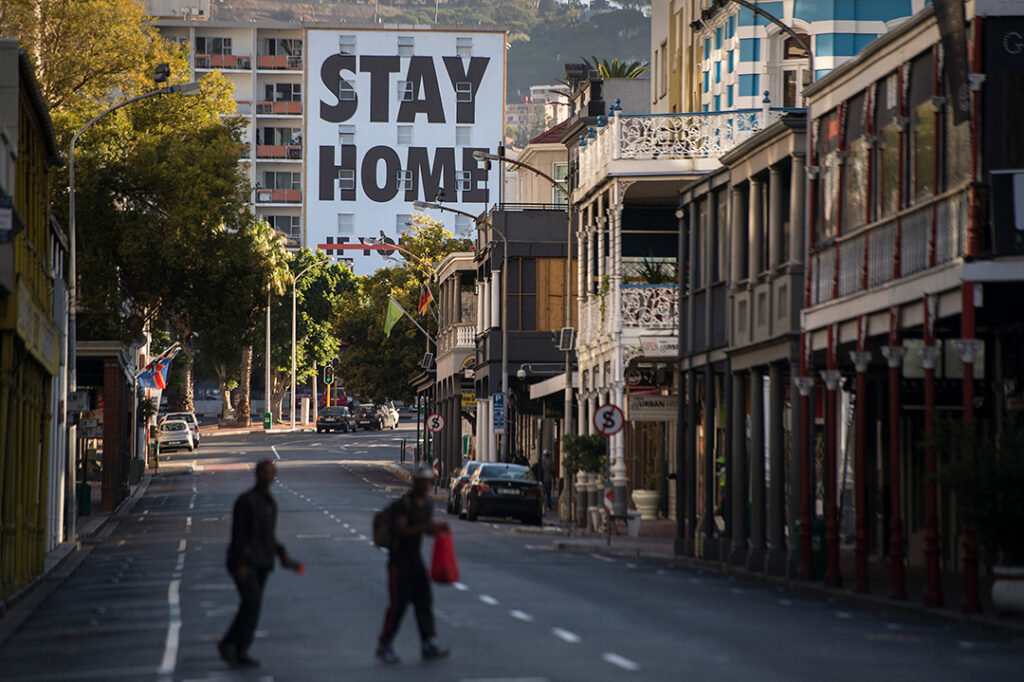ADF STAFF
As it faces a fast-moving fourth wave of COVID-19, South Africa is working urgently to educate the public on health measures.
The country’s diverse culture, language, media and economic conditions are among the reasons public health officials have faced challenges communicating about the virus.
South Africa has 11 official languages and many more dialects. English is the fourth most common tongue, but government communications typically air on English-language televised addresses.
South Africa also disseminates information in online briefings, but like TV, citizens’ access to the internet is limited.
Communications efforts have also been hampered by corruption. The Digital Vibes scandal made headlines earlier this year and led to the ouster of South African Health Minister Zweli Mkhize. His office disbursed $150 million rand ($10 million) to Digital Vibes, a communications company run by his cronies, which could account for only 40 million rand (more than $2.5 million) paid to legitimate providers.
“The biggest problem is that there’s a trust deficit that exists in terms of people’s attitudes to the state,” strategic communications expert Chris Vick told the Financial Times. “Digital Vibes made a huge contribution to that trust deficit.”
Vick is hoping to undo some of the damage as the leader of CovidComms SA, a network of communications professionals who produce simple public health information about the pandemic.
Like its government counterparts, the organization’s primary goal is getting citizens to take COVID-19 seriously and follow guidelines and restrictions put in place to limit the disease’s spread.
“We’ve been active from Day 1, since the beginning of the lockdown,” Vick said to e.TV network’s News Channel Africa. “We set ourselves up primarily because we were concerned about the government’s ability to communicate generally around COVID-19. The language used was very scientific, very medical and always in English.”
Vick said CovidComms SA has produced easily understood, easily distributed material in all South African languages.
“The government is strapped in its resources and also in its ability to reach segmented markets, which is what we’re focusing on,” he said. CovidComms SA is “looking particularly at young people, people in rural areas, people who don’t have access to the English scientific language that’s been generated.”
CovidComms was strictly a volunteer effort for its first 14 months before receiving just over $257,000 in financing from the World Health Organization’s COVID-19 Solidarity Response Fund.
“It’s probably about 2% of what was given to Digital Vibes,” he said.
Radio is another key to reaching non-English-speaking communities, according to Motsweding FM broadcaster Pontsho Pilane, who hosts a health show in the Setswana language that is prevalent in the North West province.
“South Africa’s digital divide is real,” she told the Financial Times. “Radio is the biggest medium in South Africa.”
From the Mahikeng-based station, Pilane regularly reaches about 1.7 million daily listeners. They have a lot of questions about COVID-19 and few outlets to ask.
“Most people are just scared because there’s not a lot of information out there,” she said.
Vick said provincial governments have begun making inroads at the community level by working with traditional leaders to conduct outdoor gatherings as well as go on local radio to spread the word about health measures and reestablish credibility and trust.
“Engagement in those conversations is making a huge difference,” he said. “We want to start spreading that out, particularly to rural areas.”

